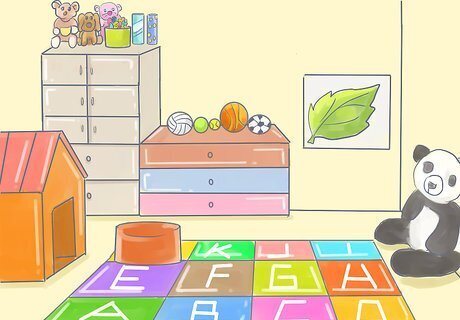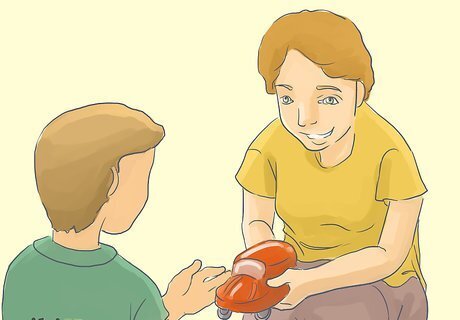
views
Create a Safe Environment

Make the room a calming sensory experience. The room should be relaxing, with activities available for children who have extra energy to expend. Paint the walls a soft, calming color, such as pink, light blue, lavender, or light green. Try a fuzzy carpet for children who sit on the ground. Keep distractions such as posters to a minimum.

Keep things quiet. Teach children that there is a time for shouting and making noise, but that it's not courteous to do it in the classroom. This helps avoid sensory overload in easily overwhelmed children.

Be strict about bullying and rude behavior. If someone is upsetting the autistic child, don't sit back and allow it to continue, and never blame the autistic child for someone mistreating them.

Respect their differences. Children feel more comfortable around you when they feel that you accept them for who they are. Don't try to force them into compliance, stop them from doing something because it "doesn't look normal," or respond violently to meltdowns.

Listen to them when they talk to you. Children won't open up if they don't feel like you're going to listen. When they talk to you, or attempt to communicate nonverbally, don't brush them off. Look at them, validate their feelings, and ask for clarification if need be. Once they realize that you're a good listener, they'll start telling you things.
Explaining Emotions

Help them distinguish between illnesses and emotions. Autistic children may confuse a feeling (e.g. anxiety) with sickness (e.g. a stomachache). Here are some strategies they can use to understand their feelings: They can go to a mirror and see their facial expression. They can stop for a minute and reflect on what just happened to them. Could this sensation be due to something they don't like? They can monitor their stims. (Are they stimming more, or using a stim that they only use when stressed?)

Use pictures of faces to describe emotions. Try creating flash cards, or making a poster chart of various facial expressions. When a child isn't sure how they're feeling, ask them to point to a picture on the poster, along with monitoring physical symptoms. Alternatively, you can make a stoplight chart, with red meaning they're upset, yellow meaning they need a minute, and green meaning they're ready to learn.

Expose them to children's media that helps explain feelings and situations. My Little Pony and The Berenstain Bears are examples of media that explains how the characters feel about different events. As you read or watch, ask "How do you think (s)he feels about that?" If the child isn't sure, throw out a few suggestions.
Explaining How to Deal With Emotions

Talk about different strengths of emotion. For example, there's a difference between "cheerful" and "overjoyed." Try rating emotions from 1 to 5, and discussing how you might act based on that emotion.

Discuss anger as a natural and okay thing. Some autistic children are afraid to express anger because they think it is bad. Talk about how it's a normal reaction to seeing something that you think is wrong, and that there are ways to deal with it. Counting Taking a break Telling an adult Taking deep breaths

Help the children understand how to deal with sadness properly. Autistic children may not understand their own sadness, and may not realize that they are sad. Encourage them to take a break when they're feeling down, to seek solace in their friends or special interests, and talk about it with an adult if they need to.

Explain the importance of telling people what they want. Autistic children may be afraid of asserting their needs, because they are used to being told that they are burdens. Assure them that their needs are reasonable and worth your attention.

Encourage to tell an adult (you or someone else) if they become overwhelmed, or if they encounter a problem they can't solve by themselves. Self-calming techniques alone do not usually solve a problem. Teach them to reach out and get help when they aren't sure they can handle something by themselves.















Comments
0 comment